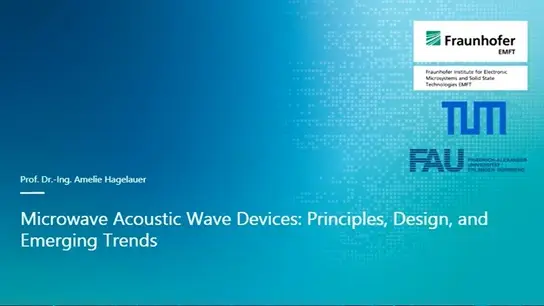Global Weather Observations from a Science Quality Millimeter Wave Atmospheric Sounding Radiometer on a 6U CubeSat Slides
Steven Reising
-
Members: FreeMTT
IEEE Members: $9.00
Non-members: $14.00Pages/Slides: 45
20 Aug 2018
Global observations of clouds and precipitation processes are essential to improve monitoring and prediction of tropical cyclones and severe storms with substantial impacts on human life and property. Convection plays an important role in influencing global weather patterns, as well as distributing fresh water and producing severe weather conditions. However, fundamental gaps in understanding remain, prompting the 2017 Earth Science Decadal Survey to state one of its “most important” science questions as, “Why do convective storms, heavy precipitation, and clouds occur exactly when and where they do?”
To improve understanding of cloud and precipitation processes, rapid revisit global observations are necessary. Geostationary satellites provide visible and infrared weather observations with temporal resolution of approximately a few minutes. However, improving understanding of the life cycle of convection requires fine time-resolution microwave radiometric observations that penetrate deep inside storms where precipitation processes occur.
To address this critical need for observations, the Temporal Experiment for Storms and Tropical Systems (TEMPEST) mission deploys a train of up to eight 6U CubeSats with identical low-mass, low-power millimeter-wave radiometers observing at five frequencies from 87 to 181 GHz. The TEMPEST train samples rapid changes in the life cycle of convection by observing every 3-4 minutes for up to 30 minutes. TEMPEST fills a critical observational gap and complements existing and future satellite missions.
To demonstrate a global microwave atmospheric sounder on a 6U CubeSat, the TEMPEST Demonstration (TEMPEST-D) satellite was launched to the ISS on May 21, 2018 and successfully deployed from the ISS on July 13, 2018, from an initial orbit with 400-km altitude and 51.6° inclination. TEMPEST-D met its mission requirements in the first 90 days and continues to provide weather observations for more than 11 months. Comparison of on-orbit measurements with four reference sensors indicate that TEMPEST-D is a very well-calibrated and stable radiometer with low noise, rivaling that of much larger and more expensive operational instruments.
To improve understanding of cloud and precipitation processes, rapid revisit global observations are necessary. Geostationary satellites provide visible and infrared weather observations with temporal resolution of approximately a few minutes. However, improving understanding of the life cycle of convection requires fine time-resolution microwave radiometric observations that penetrate deep inside storms where precipitation processes occur.
To address this critical need for observations, the Temporal Experiment for Storms and Tropical Systems (TEMPEST) mission deploys a train of up to eight 6U CubeSats with identical low-mass, low-power millimeter-wave radiometers observing at five frequencies from 87 to 181 GHz. The TEMPEST train samples rapid changes in the life cycle of convection by observing every 3-4 minutes for up to 30 minutes. TEMPEST fills a critical observational gap and complements existing and future satellite missions.
To demonstrate a global microwave atmospheric sounder on a 6U CubeSat, the TEMPEST Demonstration (TEMPEST-D) satellite was launched to the ISS on May 21, 2018 and successfully deployed from the ISS on July 13, 2018, from an initial orbit with 400-km altitude and 51.6° inclination. TEMPEST-D met its mission requirements in the first 90 days and continues to provide weather observations for more than 11 months. Comparison of on-orbit measurements with four reference sensors indicate that TEMPEST-D is a very well-calibrated and stable radiometer with low noise, rivaling that of much larger and more expensive operational instruments.


